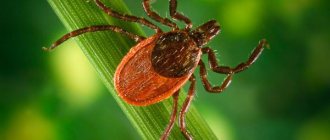Who can get rabies?
Rabies affects almost all species of terrestrial mammals, primarily carnivores (families canines, felines, mustelids, raccoons, etc.). Wild and domestic birds, rodents, and bats can also get sick. Every year in our country hundreds of cases of the disease are recorded among wild (foxes, raccoon dogs, wolves, etc.) and domestic (dogs, cats, cattle, horses) animals. There have been isolated cases of hydrophobia with fatal outcomes among people. The source of rabies is a wild animal that became infected in the natural environment, as well as a domestic animal that was attacked by another sick animal (wild or domestic). Humans become infected from sick animals.
How does infection occur?
The causative agent of rabies is a specific virus contained in the saliva of a sick animal. Human infection occurs through a bite and penetration of saliva from a sick animal into the wound. Having penetrated through damaged skin, the rabies virus spreads along the nerve trunks to the brain and spinal cord. This is where the virus multiplies and accumulates mainly. Then it penetrates the salivary glands and is released with saliva into the external environment. The virus appears in saliva 1-7 days before the first clinical signs of the disease. Therefore, you can become infected with rabies through a bite inflicted by an apparently healthy animal.
Infection can also occur if saliva gets on the mucous membranes of the eyes, nose, mouth, or damaged skin.
Scratches caused by claws are very dangerous: animals often lick their paws, so a sufficient amount of virus remains on the claws for infection.
You can also become infected when cutting up the carcass of a sick animal, as this often results in cuts to the fingers.
Unusual routes of infection should be mentioned. In recent years, the literature has described isolated cases of human infection through intact skin, by airborne droplets (in laboratory conditions, in a cave with millions of bats), through the placenta during pregnancy, and during organ and tissue transplantation. Cases of infection through the digestive tract have been described, so far only for animals. As for humans, to date there is not a single case of human illness known after consuming meat or milk of sick animals. This is due to the fact that the rabies virus rarely penetrates the blood and glandular organs. In addition, the virus is unstable in the external environment; it dies under normal pasteurization regimes, and when boiled, it dies instantly.
The most dangerous bites are those caused by rabid wolves, foxes, raccoon dogs and other wild carnivores and bats. Dog and cat bites are somewhat less dangerous. Cases of human infection after contact with a sick farm animal (cow, horse, goat, sheep, pig) are rare. Poultry, although they can get rabies, are not capable of infecting humans due to the lack of salivary glands. Unlike domestic birds, birds of prey (for example, falcons) can infect humans. However, these birds are very rare in the natural environment and the likelihood of their contact with humans is negligible. The possibility of infection of a person as a result of a bite inflicted by a rodent: rabbit, hare, squirrel, muskrat, rat, hamster, mouse cannot be ruled out. However, no reliable cases of human infection from these animals have been described in the world literature.
What damage is considered the most dangerous?
The period from the bite to the onset of the disease (latent or incubation period) averages 30-50 days in humans, although it can last 10-90 days, in rare cases - more than 1 year. Moreover, the further the bite site is from the head, the longer the incubation period. Consequently, taking into account the localization (location) of the damage, bites to the head, face, and neck are especially dangerous. The category of severe (dangerous) injuries also includes bites on the fingers, because these parts of the body have many nerve endings. Bites to the forearm, shoulder, and torso are considered less dangerous. The incubation period lasts the longest for a bite on the legs.
Features of the incubation period
The virus does not immediately detect its presence in the body. The latent incubation period after rabies infection can range from 30 to 45 days. The insidiousness of the disease is that the cat shows absolutely no signs of infection, but poses a danger already on the eighth day after the virus enters the body.
You can easily become infected with rabies from such an animal.
A lot depends on the strength of the cat’s immune system. In a healthy animal, the latent period can last up to a year. The rate of development of rabies is influenced by the following factors:
- location of the wound: the closer to the head and neck, the higher the risk of early development of the disease;
- number of bites: the more severely the cat is affected, the faster symptoms will appear.
In cats with low immunity, symptoms of rabies appear much earlier. The incubation period will be short:
- in small kittens, because their immunity is not yet formed;
- in chronically ill animals and allergy sufferers;
- in older cats;
- in cats weakened after injuries and surgical interventions.
What should you do if you are bitten by an animal?
The duration of the incubation period (i.e., the period before the onset of symptoms of the disease) in animals ranges from a week to several months (sometimes years), but already 5-10 days before the onset of the disease, the animal is contagious.
A characteristic sign of an animal disease in the first stage should be considered a change in behavior: an angry animal becomes affectionate, unreasonably animated, tries to lick the owner’s face; good - angry, irritable, does not respond to the owner’s call, hides in dark corners. The animal refuses its favorite food, but swallows inedible objects (wood, stones, etc.), and sometimes there is increased sensitivity to light and noise. Body temperature rises slightly. If we talk about wild animals, then for those who are sick, such a change will be the desire to make contact with a person: a healthy wild animal will never voluntarily go to a person and will run away whenever they try to get closer.
The initial stage of the disease is replaced by the second stage - the stage of excitation, in which the animal’s irritability increases and aggressiveness occurs. An animal can attack or bite for no apparent reason. Next comes the third, paralytic stage, very characteristic of the appearance of the animal: the fur is tousled, the lower jaw droops, the tongue falls out, saliva flows from the mouth. On the 8-10th day the animal dies.
Rabies in a dog.
In the initial period, the dog becomes depressed, responds reluctantly to calls, and lies down more. The appetite is sluggish, indifferent to water (but, as a rule, there is no hydrophobia). It must be emphasized that hydrophobia (fear of water) is not a characteristic sign of rabies in dogs. This is very important, since some people, seeing that a dog is not afraid of water (drinks water, swims across a river, etc.) consider it healthy and, if bitten, scratched or salivated by such a dog, do not take protective measures or seek medical help . By the end of the 2nd day of illness, anxiety and irritability often appear; the sick dog tries to go to some distant corner (under the porch, bed, etc.). Signs of clouding of consciousness occur, she barks for no reason, her voice becomes hoarse, dull, gasps for air and makes other involuntary movements, which never happens normally. Sometimes, as a result of itching at the site where she was bitten by a rabid animal, she chews on the healed wound. It is typical for the dog to swallow inedible objects: chips, stones, etc.
As a result of growing excitement, the dog runs away from home, running up to 50 km a day. Along the way, she silently attacks people and animals.
The period of excitement lasts 3-4 days, after which attacks of convulsions and paralysis occur. Dogs die on days 6-8 of illness. It should be remembered that the described picture of rabies in dogs is not always observed. But in any case, the animal’s normal behavior changes dramatically, which should alarm the owners and be the reason for inviting a veterinarian. Attempts to treat a dog that allegedly choked on a bone often resulted in rabies.
Rabies in a cat.
Rabies is more severe in cats than in dogs. The first signs of the disease come suddenly and are expressed by increasing anxiety and agitation. The meowing becomes hoarse, dull, the look (very characteristic!) is frightened, cautious. The cat refuses food and avoids its owners. The next day the cat becomes aggressive, with particular anger it attacks dogs and humans.
Excitation lasts 1-2 days, and then paralysis develops. Death occurs within 2-5 days. A characteristic feature of bites from a sick cat is a spasm of the masticatory muscles, as a result of which, after a bite, such a cat can be extremely difficult to tear away from the wound.
It should be emphasized that in case of any illness in the animal, and especially when symptoms of rabies appear, you should immediately contact the nearest veterinary station. Under no circumstances should you self-medicate an animal - this is deadly!
Symptoms of cat scratch disease
The cat itself will not have any symptoms, so you cannot know for sure whether the whisker in front of you is healthy or a carrier of Bartonella. And only after the cat paws at you can you be sure that you have become infected. Therefore, all the symptoms described below are typical for humans.
From the moment the cat scratches until the first signs appear, it takes from a week to a month and a half. 2 forms of the disease: typical and atypical.
Typical shape
First, the scratch or bite wound itself becomes red and inflamed. Then papules form, which gradually turn into pustules. The lymph nodes that are closest to the gate of infection (wound) become enlarged (due to inflammation) and become painful. The ulcers dry out, a crust appears on top, which soon falls off, leaving no traces behind. If you don't want scarring, don't tear the crust. Wait for it to fall off on its own.
After 2 weeks, the lymph nodes begin to become inflamed. Cat scratch disease, benign lymphoreticulosis, felinosis - these are all one name for the disease. The size of the node can reach a matchbox, much less often it becomes 10 cm. Against the background of inflammation, the temperature also rises. It’s different for everyone, depending on their immunity. Those who have it strongly rarely have problems. It lasts a couple of weeks, then recovery occurs.
Atypical forms
The ocular form occurs when the pathogen enters the conjunctiva of the eye from the saliva of a sick pet. Ulcers, granulomatosis appear on it, the eyelids swell and turn red. The eyes are difficult to open. And lymphadenitis begins in the mandibular and parotid nodes.
It is extremely rare to develop a neurological atypical form of cat scratch disease. Muscles ache, radiculitis and myelitis appear, but inflammatory processes in the meninges and the brain itself are very rarely recorded. But still, sometimes encephalitis and meningitis develop. But these symptoms appear only a couple of weeks after the reaction from the lymph nodes appears.
The liver and spleen can also suffer in the atypical form. Granulomas (nodules) appear, and the temperature fluctuates, as if in waves, if you draw up a graph. A blood test can tell a lot. Bilirubin, as well as AST and ALT are increased, other liver enzymes are also higher than normal. An ultrasound will show that the organs are larger than their normal size and that there are compactions (nodules).
Endocarditis and osteomyelitis are less common.
What should you do if you are bitten by an animal?
If a child or adult is bitten, scratched, slobbered by any animal, even an apparently healthy one, much less a neglected or wild one, or if there is a suspicion that it has rabies, you should immediately:
- Wash the wound intensively for 10-15 minutes with soap and water, which will wash away the animal’s saliva. It is recommended to wash deep wounds with a stream of soapy water, for example, using a syringe. There is no need to cauterize wounds.
- Apply a sterile bandage to the wound.
You should be warned about the danger of sucking the wound with your mouth.
After this, you must contact the nearest trauma center or any medical institution (clinic, hospital, medical center) as soon as possible. If possible, it is necessary to collect as much data as possible about the bitten animal (description of the animal, its appearance and behavior, presence of a collar, circumstances of the bite, etc.). If the animal is domestic (dog or cat) and has been vaccinated against rabies, then you must take with you a veterinary certificate confirming the vaccination or a registration certificate with a mark on the vaccination.
What to do if scratched or bitten by a cat
If you receive a bite or deep scratch from a cat, especially an outdoor cat, you should immediately wash the wound with soap and water. It should not contain flavors or dyes. The ideal choice is laundry soap. In an alkaline environment, the rabies virus loses its activity.
For this procedure, you should prepare a soap solution, direct a strong stream of it directly to the damaged area. This can be done using a syringe or a syringe without a needle. After thorough washing, the wound should be covered with a sterile gauze pad and bandaged not too tightly.
It is strongly not recommended to cauterize or tighten the bite site. You can wash the wound with alcohol and treat it with an antiseptic.
The next mandatory step is going to the emergency room. The patient will have his wound treated and will receive anti-tetanus serum. He will also be prescribed rabies vaccine prophylaxis. These measures are quite sufficient to prevent the development of a dangerous disease.
Important! Do not take lightly injuries sustained from a domestic cat, even your own cat.
What do you do with an animal that has bitten you?
It is very important to indicate that simultaneously with contacting a doctor about a bite, it is necessary to take measures regarding the bitten animal (it must be tied up, isolated) and call a veterinarian for consultation. Appearingly healthy pets (dogs or cats) are subject to veterinary supervision for 10 days from the date of the bite.
A sick animal must be euthanized. It is impossible to save him. As the disease progresses, the behavior of such an animal is uncontrollable. It is important to prevent human infection.
Excitation stage
The stage is characterized by increased sensitivity to external stimuli (light, smell, touch, sound) and fear of water. For example, the patient cannot even take a sip of water - convulsive contractions begin, even to the point of vomiting. As the disease progresses, convulsions occur even from the sound of pouring water. The patient's blood pressure rises, the heart rate increases, breathing becomes frequent and shallow, profuse sweating and drooling appear.
This stage is characterized by periods of excitement when the sick person cannot control himself. He becomes aggressive, tears his clothes, attacks people, and screams in a voice that is not his own. The attack is accompanied by aggressive hallucinations.
On our website Dobrobut.com you will find more information on this topic. By calling the above numbers, you can make an appointment with a doctor who will tell you when to do a blood test for rabies and what can alleviate the condition of an already sick person.
What measures do you know to prevent rabies in animals?
Should a person, caring for the safety of his life, refuse to communicate with animals? Not a single mechanical toy can replace human communication with a living creature of another species. They give us their love and affection, heal us, make us kinder and more humane. We must always remember that animals need care and supervision; they, like people, are susceptible to many diseases.
In order to prevent rabies in domestic animals, the Rules for keeping them should be followed:
- within three days, register the purchased animal and report it to the veterinary station;
- It is mandatory to vaccinate your pet (over 3 months old) against rabies every year; it is better to do this in the winter and spring, especially before going outdoors;
- walk animals in specially equipped areas or vacant lots, take dogs outside on leashes and muzzles (this will protect the animal from possible contact with sick wild or stray animals and eliminate the possibility of your animal biting anyone);
- You cannot bring dogs and cats to shops, catering and consumer services establishments, schools and preschool institutions, public buildings, parks, squares, stadiums, markets;
- minors are prohibited from walking dogs of potentially dangerous breeds;
- Under no circumstances should you leave or abandon your animals unattended on the streets, squares, markets, entrances and other places, including in the country.
The best way to prevent rabies in wild animals is to vaccinate them by placing baits containing the vaccine near their natural habitats.
What preventive measures are there if you are bitten by an animal?
All kinds of recommendations for the prevention and treatment of rabies - the destruction of enraged animals, cauterization of bitten areas in people with a hot iron - did not produce any effect. Almost every person bitten by a rabid animal was doomed to death. Until the 80s of the 19th century, people did not have a reliable means of protection against this terrible disease.
The great French scientist Louis Pasteur has the honor of creating a vaccine against rabies, which was successfully used for the first time on July 6, 1885. Then, thanks to vaccination, a boy bitten by a rabid dog was saved. And some time later, in a French village, children playing were attacked by a rabid dog. Defending them, fifteen-year-old shepherd Jean Jupille accomplished a real feat. He managed to tie the dog's face with a belt whip and kill it with his wooden shoe. But the boy's entire body was covered with wounds. Barely alive, Jean was brought to Paris. Pasteur saved the hero.
To this day, vaccinations remain the only reliable means of protecting people after being bitten by an animal sick or suspected of having rabies. These include the administration of a vaccine and, if necessary, immunoglobulin.
What you need to know about preventive vaccinations:
- if the doctor has prescribed vaccinations, they should be started immediately;
- Under no circumstances should you skip the next vaccination;
- the course of vaccinations prescribed by the doctor must be completed in full;
- a person who is vaccinated is not dangerous to anyone;
- During vaccinations, you should not drink alcoholic beverages for 6 months after their completion; you should avoid overwork, hypothermia, and overheating.
Along with vaccinations, on the recommendation of Belarusian scientists, antibiotic prophylaxis is also carried out.
How often do cats get a rabies injection and who is the vaccine contraindicated for?
There is no treatment for rabies.
Rabies vaccinations are given annually. The countdown starts from the first injection. The exception is the Dutch vaccine Novibak. When used, immunity is formed for 3 years.
If the cat is taken outside the Russian Federation, then the vaccination will have to be repeated in a year.
It is prohibited to vaccinate an animal that has an acute viral or chronic disease. Pregnant and weakened cats should not be vaccinated.
How to avoid being bitten or salivated by unknown animals?
Children are more likely to suffer from animal bites, so it is necessary to constantly educate them and try to avoid unnecessary contact with animals, especially wild and/or stray ones:
- You should not play with unfamiliar dogs, cats and other animals; it is better to stay at a safe distance from them;
- should not be picked up at the dacha, in the forest, etc. wild animals. Hedgehogs and small rodents can also carry rabies. Incorrect or inappropriate behavior of a child who, due to his age, will not be able to correctly assess the situation, can lead to aggression in any animal, especially a sick animal;
- It is better not to pick up homeless stray or sick animals, but if you do, then find an opportunity to quickly vaccinate the animal and show it to a veterinarian;
- You should not take an animal “for the summer holiday season”: by throwing it away, you increase the risk of rabies in the given region. It is better not to send children under 12-14 years of age to walk a dog on their own, especially if it is a large and/or aggressive breed of animal. The child may not be able to cope with it, and in the event of a non-standard situation, he may not be able to adequately explain the essence of what happened.
Diagnostics
Diagnosis is based on medical history: an animal bite or salivation of the skin. Then specific signs of rabies play a role: fear of hydrophobia, increased sensitivity to irritants (sounds, light, drafts), excessive salivation, attacks of psychomotor agitation with convulsions (even in response to the slightest movement of air).
Laboratory methods include the detection of rabies virus antigens in imprints from the surface of the cornea. A blood test reveals leukocytosis due to an increase in the content of lymphocytes. After the death of the patient, an autopsy reveals Babes-Negri bodies in the brain.










